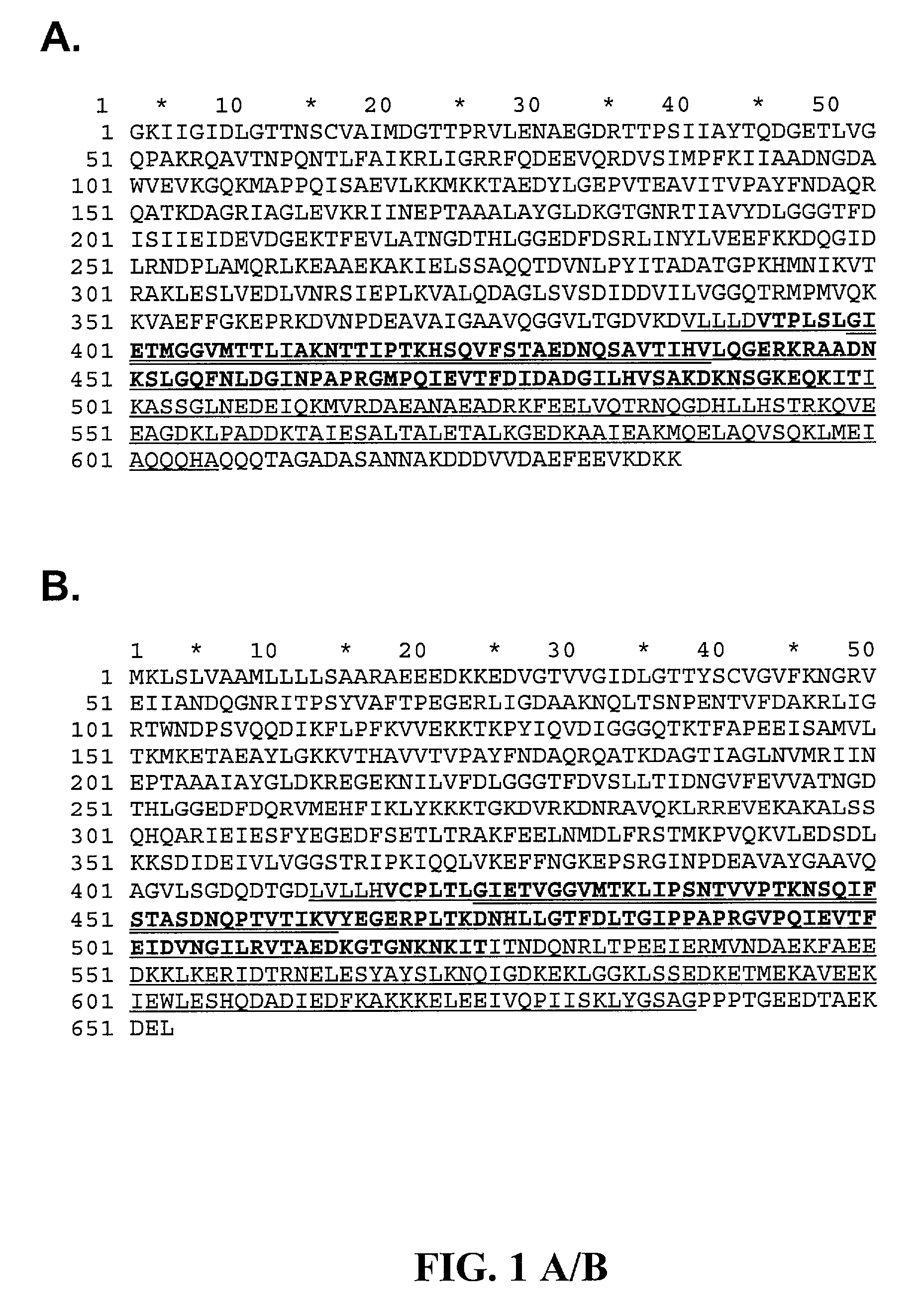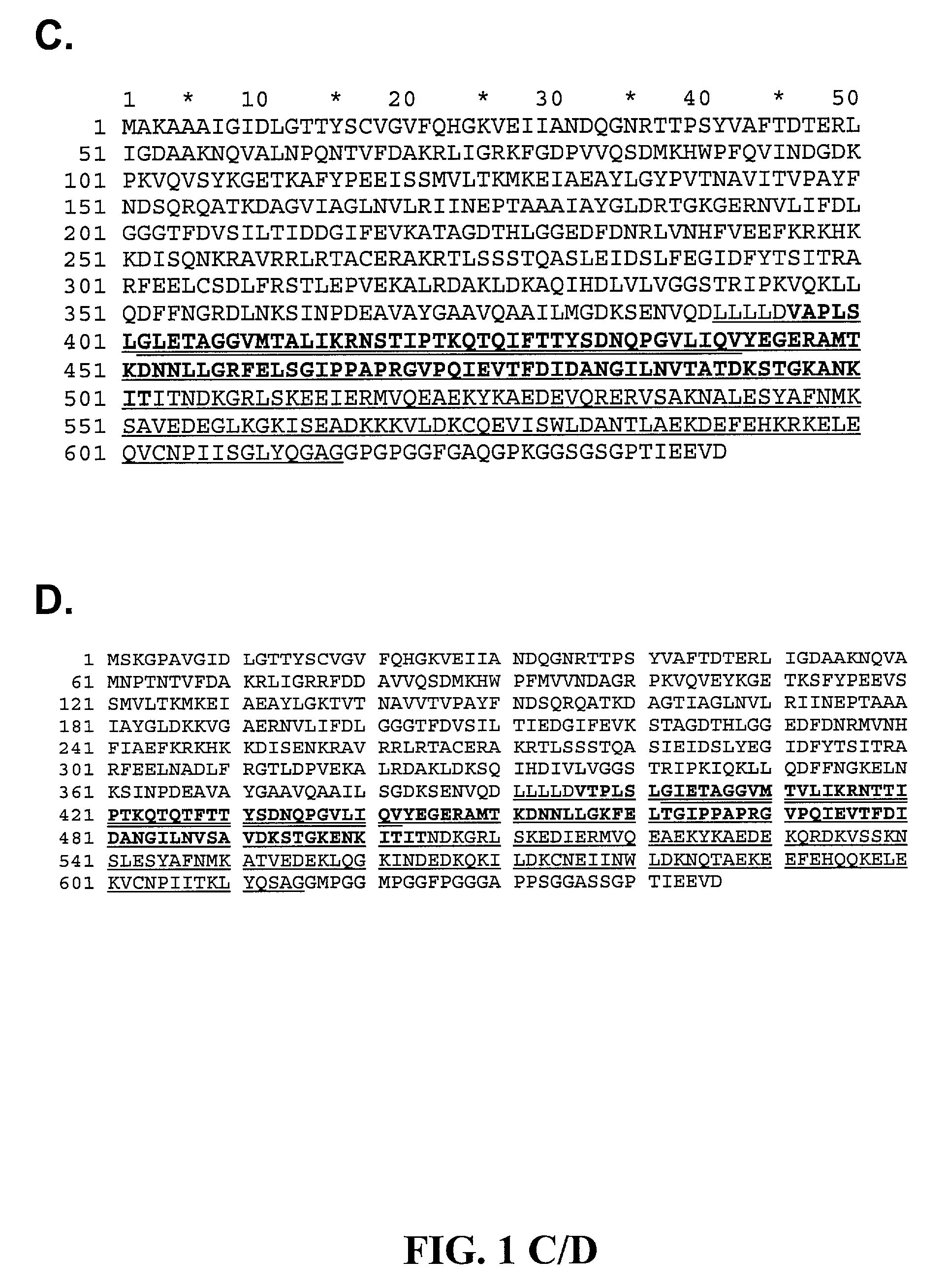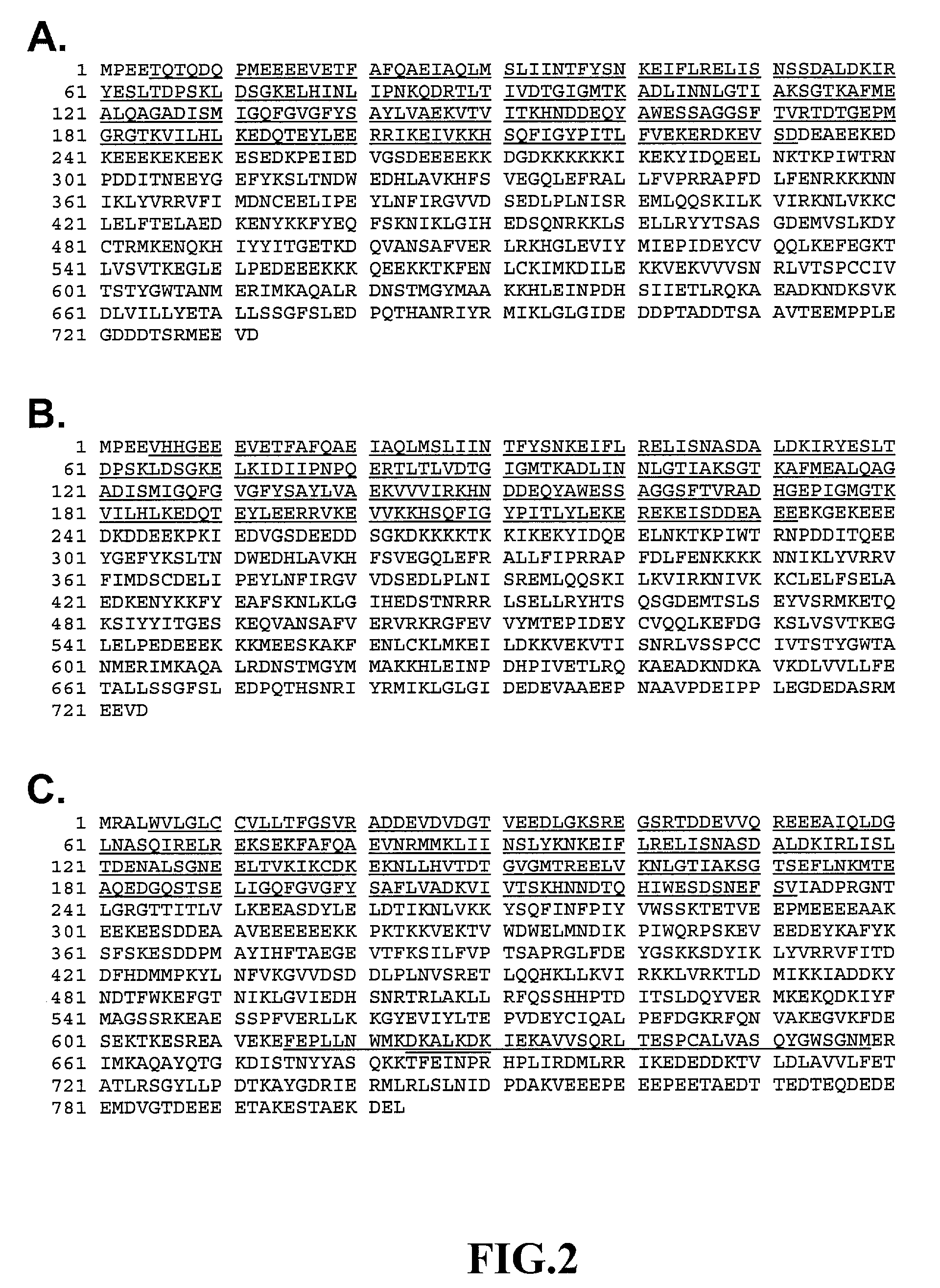0076] In one embodiment, the invention provides a method of eliciting an immune response against an antigen in an individual comprising administering to the individual an immunogenic complex of a heat shock protein fragment noncovalently associated with a first antigenic molecule displaying antigenicity of the antigen, said heat shock protein fragment comprising a peptide-binding domain that is contiguous on the N-terminal side with x number of amino acids that naturally flank the peptide-binding domain on the N-terminal side, and that is contiguous on the C-terminal side with y number of amino acids that naturally flank the peptide-binding domain on the C-terminal side, wherein x plus y is not more than 400. In one embodiment, heat shock protein fragment of said method lacks one or more other heat shock protein domains. In another embodiment, the invention provides the above-described method, further comprising, before, concurrently, or after administration of the immunogenic complex, administering to the individual a composition comprising antigen presenting cells sensitized in vitro with a sensitizing amount of a second immunogenic complex consisting essentially of a heat shock protein, or fragment thereof, noncovalently bound to a second antigenic molecule, in which said second antigenic molecule shares at least one antigenic determinant with the first antigenic molecule.
0077] The invention further encompasses the use of heat shock protein peptide-binding fragments in methods for immunotherapy for treatment and prevention of infectious diseases. In various embodiments, heat shock protein peptide-binding fragments are used in methods for preventing or treating an infectious disease in an individual having an infectious disease, or in whom prevention of an infectious disease is desired. In various embodiments the infectious disease is caused by an infectious agent selected from the group consisting of viruses, bacteria, fungi, and parasites.
0078] In one embodiment, a method is provided comprising administering to the individual an immunogenic complex of a heat shock protein peptide-binding fragment noncovalently associated with a first antigenic molecule, said heat shock protein peptide-binding fragment comprising a peptide-binding domain that is contiguous on the N-terminal side with x number of amino acids that naturally flank the peptide-binding domain on the N-terminal side, and that is contiguous on the C-terminal side with y number of amino acids that naturally flank the peptide-binding domain on the C-terminal side, wherein x plus y is not more than 400, wherein the first antigenic molecule displays the antigenicity of an antigen of an infectious agent of the infectious disease. In one embodiment, the heat shock protein fragment of said method lacks one or more other heat shock protein domains. In another embodiment, the method further comprises, before, concurrently or after administration of the immunogenic complex, administering to the individual a composition comprising antigen presenting cells sensitized in vitro with a sensitizing amount of a second complex of a heat shock protein or fragment thereof noncovalently bound to a second antigenic molecule, said second antigenic molecule sharing at least one antigenic determinant with the first antigenic molecule.
0079] In another embodiment, the invention further provides a method of treating or preventing an infectious disease in a subject having an infectious disease or in whom prevention of an infectious disease is desired comprising: a) culturing an infected cell transformed with a nucleic acid comprising a nucleotide sequence encoding a heat shock protein peptide-binding fragment, said infected cell displaying the antigenicity of an antigen of an infectious agent of the infectious disease, said heat shock protein peptide-binding fragment comprising a peptide-binding domain that is contiguous on the N-terminal side with x number of amino acids that naturally flank the peptide-binding domain on the N-terminal side, and that is contiguous on the C-terminal side with y number of amino acids that naturally flank the peptide-binding domain on the C-terminal side, wherein x plus y is not more than 400, said nucleotide sequence being operably linked to a promoter, under conditions such that the fragment is expressed by the
 Login to View More
Login to View More 


